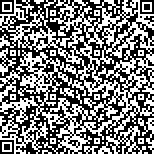| Quote
: |
申林强,章淑薇,邓鑫杰,靳陈丽芸,刘欣汝,刘碧源.基于网络药理学与分子对接技术探讨桔梗元参汤治疗过敏性鼻炎的作用机制[J].湖南中医药大学学报英文版,2022,42(8):1310-1318.[Click to copy
] |
|
| |
|
|
| This paper
:Browser 1464times Download 859times |
| 基于网络药理学与分子对接技术探讨桔梗元参汤治疗过敏性鼻炎的作用机制 |
| 申林强,章淑薇,邓鑫杰,靳陈丽芸,刘欣汝,刘碧源 |
| (湖南中医药大学医学院, 湖南 长沙 410208) |
| 摘要: |
| 目的 运用网络药理学与分子对接技术探讨桔梗元参汤治疗过敏性鼻炎的作用机制。方法 应用中药药理学分析平台(TCMSP)和PubChem筛选桔梗元参汤的活性化合物和作用靶点。通过GeneCards数据库获取过敏性鼻炎疾病靶点。运用Cytoscape建立桔梗元参汤治疗过敏性鼻炎的单药化合物-靶标-疾病的相互作用网络,并通过STRING和DAVID数据库进行蛋白质-蛋白质相互作用网络、GO富集分析和KEGG通路富集分析,运用Autodock Vina软件进行分子对接验证。结果 网络药理学分析结果显示,筛选得到桔梗元参汤活性成分98个,药物靶点339个,疾病靶点2206个。将药物靶点和疾病靶点相互映射得到120个共有靶点。药物核心成分为槲皮素、木犀草素、黄芩素和儿茶素等,药物作用核心靶点主要为STAT3、JUN、MAPK1和IL-6等。GO富集分析得到2232个条目,KEGG通路富集分析确立了165条相关通路,主要包括AGE-RAGE信号通路、IL-17信号通路、TNF信号通路、C型凝集素受体信号通路和HIF-1信号通路等。分子对接结果显示药物主要活性成分与核心靶点结合活性良好。结论 通过网络药理学研究发现,桔梗元参汤可能通过AGE-RAGE、IL-7和TNF等信号通路影响STAT3、JUN和MAPK1等靶蛋白的表达,发挥多靶点和多途径治疗过敏性鼻炎的作用。 |
| 关键词: 过敏性鼻炎 桔梗元参汤 信号通路 网络药理学 分子对接 |
| DOI:10.3969/j.issn.1674-070X.2022.08.013 |
| Received:January 18, 2022 |
| 基金项目:湖南省教育厅科研项目一般项目(17C1195);湖南中医药大学大学生创新创业训练计划(X201910541051);湖南中医药大学重点学科《基础医学》。 |
|
| Mechanism of Jiegeng Yuanshen Decoction on allergic rhinitis based on network pharmacology and molecular docking technology |
| SHEN Linqiang,ZHANG Shuwei,DENG Xinjie,JIN Chenliyun,LIU Xinru,LIU Biyuan |
| (School of Medical College, Hunan University of Chinese Medicine, Changsha, Hunan 410208, China) |
| Abstract: |
| Objective To investigate the mechanism of Jiegeng Yuanshen Decoction on allergic rhinitis by network pharmacology and molecular docking. Methods The active compounds and related targets of Jiegeng Yuanshen Decoction were screened by traditional Chinese medicines systems pharmacology platform (TCMSP) and PubChem database. The targets of allergic rhinitis were obtained from GeneCards database. The interaction network of Jiegeng Yuanshen Decoction on single drug compound-target-disease was established by Cytoscape. The protein-protein interaction network, GO enrichment analysis and KEGG pathway analysis were carried out through STRING and DAVID databases. Autodock Vina software was used for molecular docking. Results The results of network pharmacological analysis showed that 98 active components and 339 corresponding drug targets of Jiegeng Yuanshen Decoction were screened. A total of 2206 allergic rhinitis targets were obtained. Drug targets and disease targets were mapped to each other to get 120 common targets. The core ingredients were quercetin, luteolin, baicalein, catechinic acid. STAT3, JUN, MAPK1 and IL-6 were the core targets in the treatment of allergic rhinitis. A total of 2232 items were identified by GO enrichment analysis, and 165 related pathways were identified, which mainly included AGE-RAGE signaling pathway, IL-17 signaling pathway, TNF signaling pathway, C-type lectin receptor signaling pathway and HIF-1 signaling pathway. The outcomes of molecular docking demonstrated that the main active components of the drug had good binding activity with the core targets. Conclusion Through the network pharmacology research, it is found that Jiegeng Yuanshen Decoction may affect the expression of target proteins such as STAT3, JUN and MAPK1 through AGE-RAGE, IL-7 and TNF signaling pathway, and play the role of multi-target and multi-channel treatment of allergic rhinitis. |
| Key words: allergic rhinitis Jiegeng Yuanshen Decoction signaling pathway network pharmacology molecular docking |
|

二维码(扫一下试试看!) |
|
|
|
|


